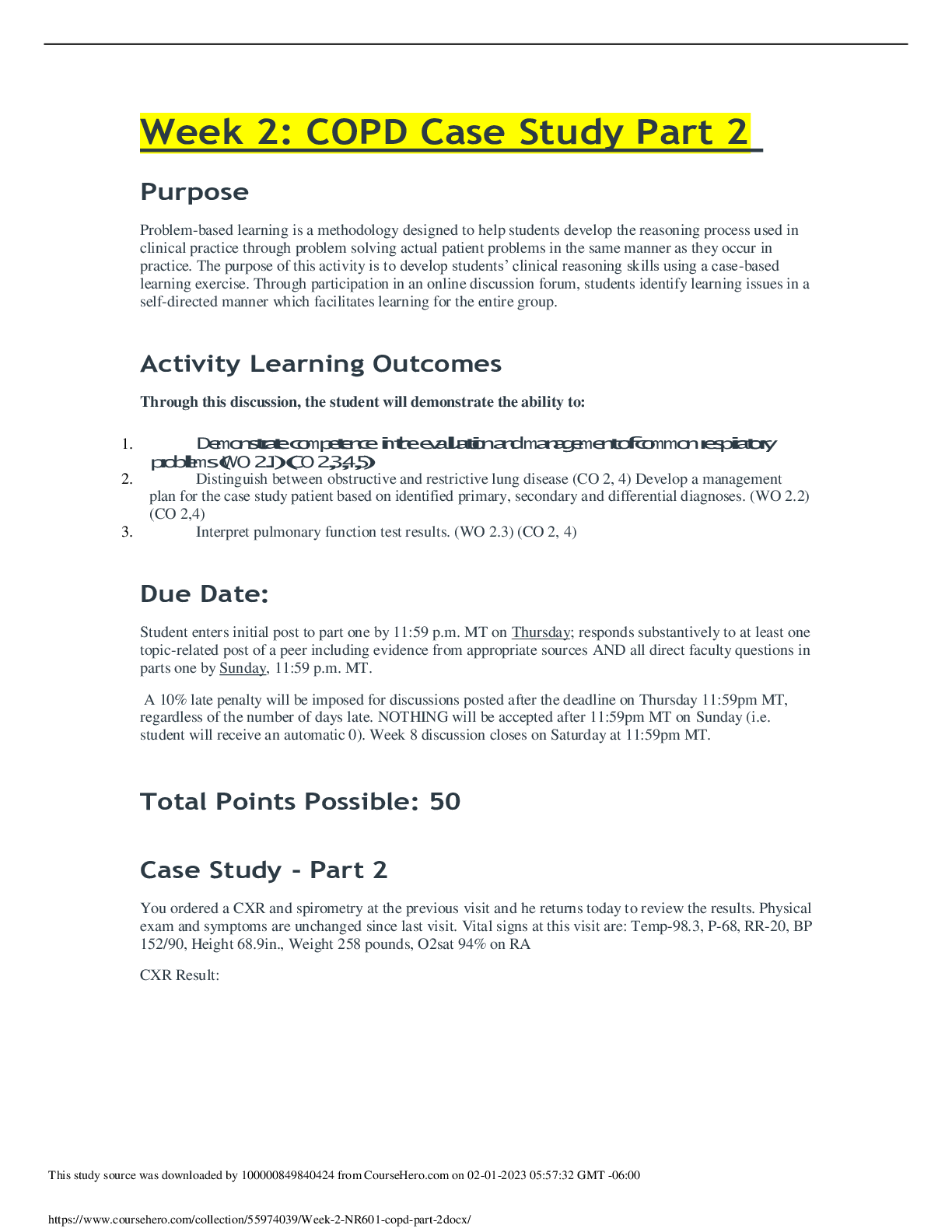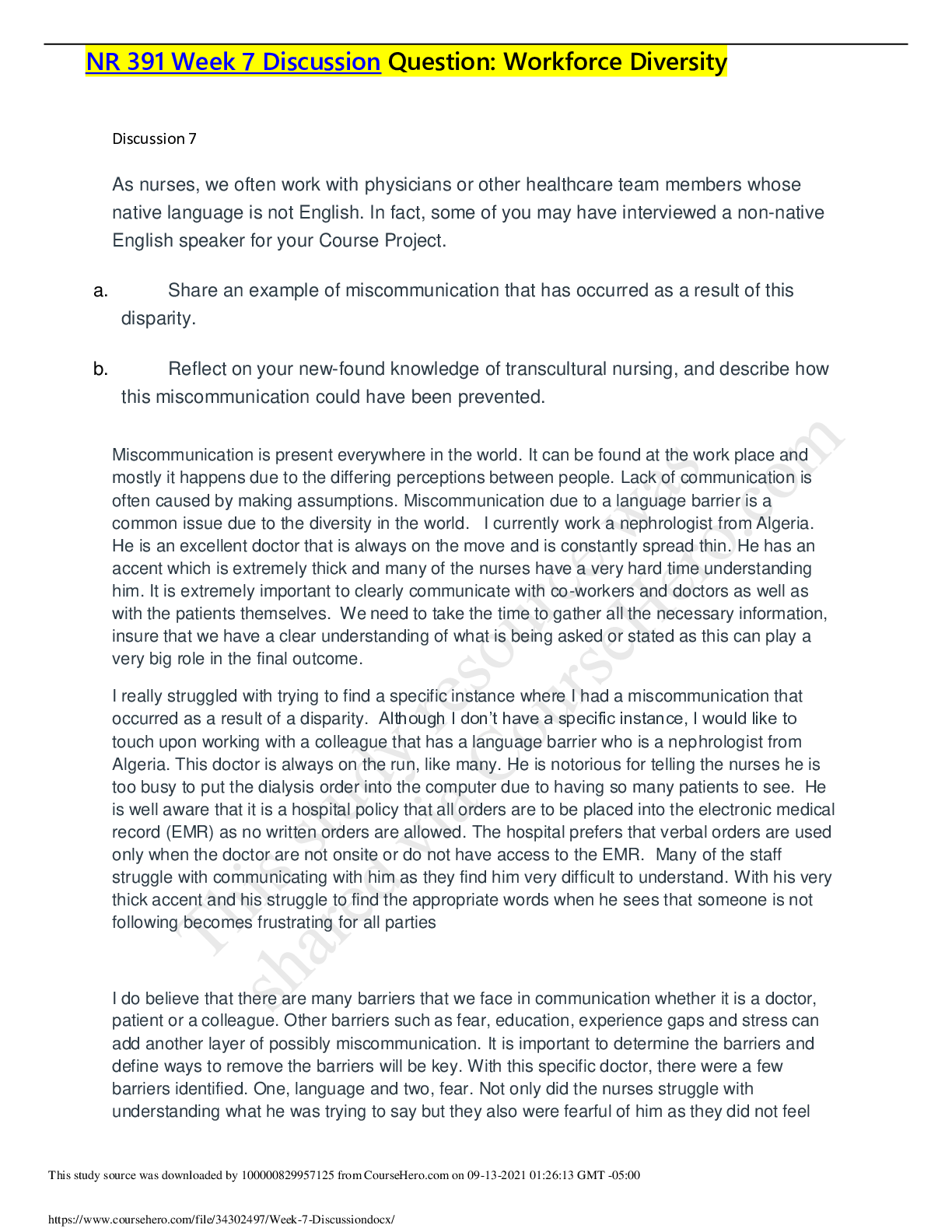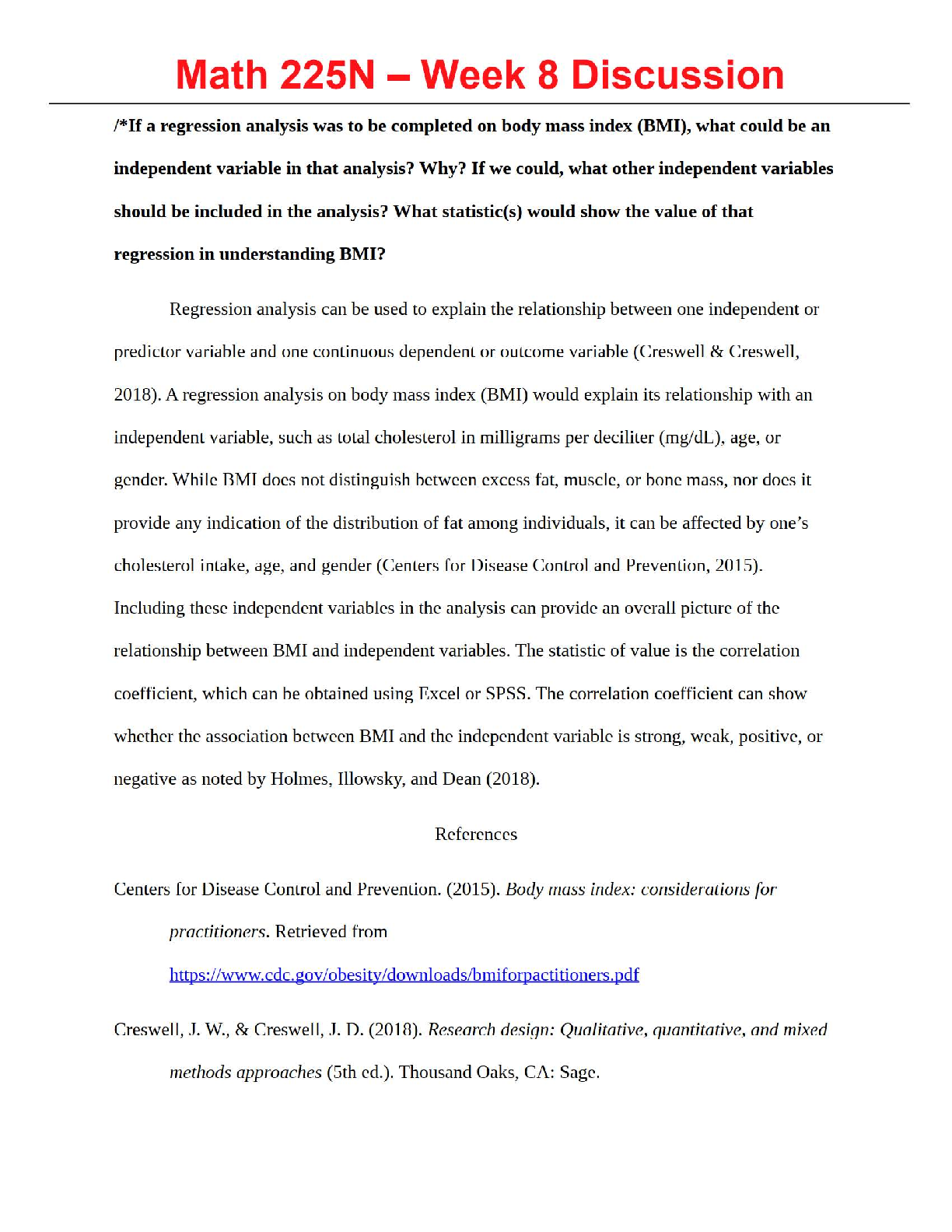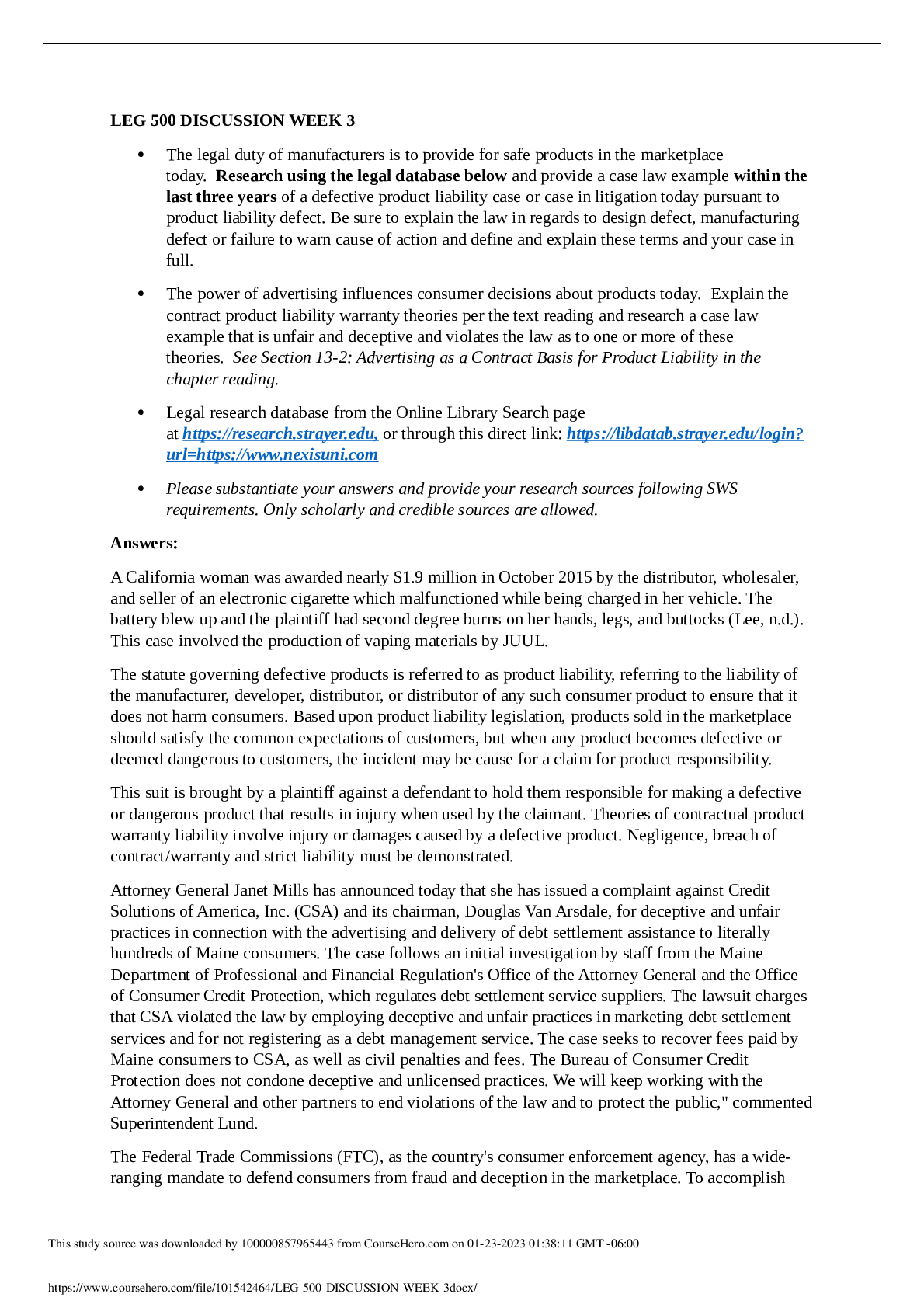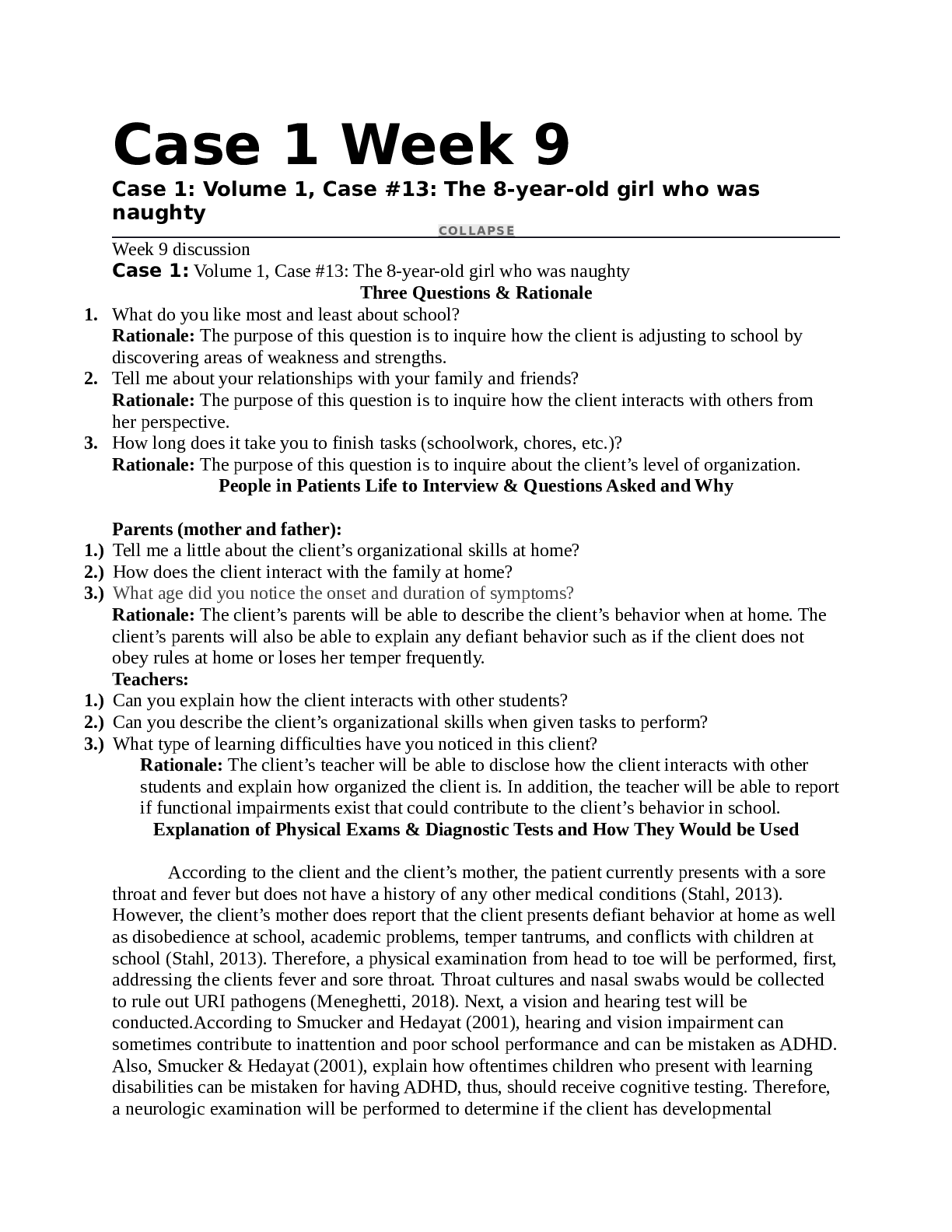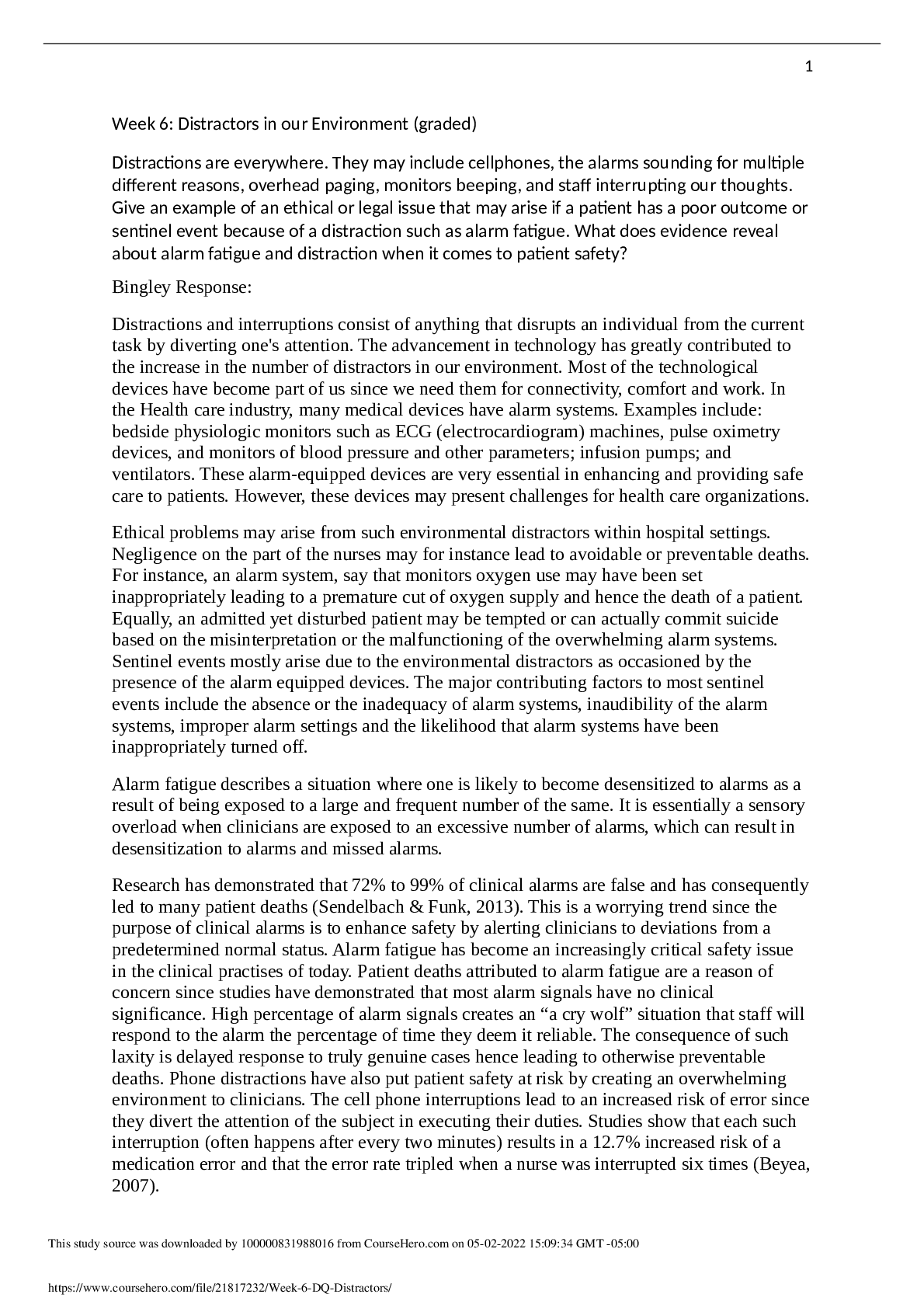*NURSING > DISCUSSION POST > NR 601 Week 5 Case Study Assignment: Diabetic Case Study(GRADED A) (All)
NR 601 Week 5 Case Study Assignment: Diabetic Case Study(GRADED A)
Document Content and Description Below
NR 601 Week 5 Case Study Assignment: Diabetic Case Study The assignment is a paper, which is to be written in APA format using the provided assignment template. The paper shall not exceed 10 pages, e ... xcluding title page and references. Review the provided patient visit information. You are provided with the subjective and objective exam findings. As the provider, you are to diagnose the case study patient and develop the management plan for this case study patient. Keep in mind this is a complex patient who has more than one diagnosis, which is common in primary care. Use the provided case study template for your paper. Review the APA Manual to adhere to APA formatting. Introduction: briefly discuss the purpose of this paper. (no more than 5 sentences) Assessment: review the provided case study information. Identify the primary and secondary diagnosis for the patient. Each diagnosis will include the following information: ICD 10 code. A brief pathophysiology statement which is no longer that two sentences, paraphrased and includes common signs and symptoms of the diagnosis and proper citation. The patient’s pertinent positive and negative findings, including a brief 1-2 sentence statement, which links the subjective and objective findings (including lab data and interpretation). An evidence-based rationale statement, which summarizes why the … was chosen. Do not include quotes, paraphrase all scholarly information and provide an in-text citation to your scholarly reference. Use the Reference Guidelines document for information on scholarly references. Plan: (there are five (5) sections to the management plan) List all labs and diagnostic test you would like to order. Each test includes a rationale statement following the listed lab, which includes the diagnosis requiring the test, the purpose of the test and how the test results will contribute to your management plan. Each rationale statement is … Include all future follow up labs for each listed diagnosis. Medications: Each medication is listed in prescription format. Each prescribed and OTC medication is linked to a specific diagnosis and includes a paraphrased EBP rationale for prescribing. Education: section includes personalized detailed education on all five (5) subcategories: diagnosis, each medication purpose and side effects, diet, personalized appropriate exercise recommendations and warning sign for diagnosis and medications if applicable. All education steps are … EBP rationale. Review the NR601 Clinical SOAP note guideline for more detailed information. Referrals: any recommended referrals are appropriate to the patient … and current condition, is linked to a specific diagnosis and includes a paraphrased EBP rationale with in text citation. Review the ADA guidelines for specific follow up recommendations. Follow up: Follow up includes a specific time, not a time range, to return to PCP office for next scheduled appointment. Includes EBP rationale with in text citation. Assessment of Comorbidities: in this section students will review the ADA Standards of Medical Care in Diabetes (the guidelines) Assessment of Comorbidities section on comorbidities subsection and choose one listed comorbidity. Students will discuss the significance of and the relationship between the patient’s primary diagnosis and the chosen comorbidity, explaining how one diagnosis affects the other diagnosis. Medication costs: in this section students will research the costs of all prescribed and OTC monthly medications that you have prescribed and that the patient is currently taking that you would like to continue. Students may use Good Rx, Epocrates or another resource (students may use local pharmacy websites) which provides medication costs. … list each medication, the monthly cost of the medication and the reference source. Students will calculate the monthly cost of the case study patient’s prescribed and OTC medications and provide the total costs of the month’s medications. Reflect on the monthly cost of the medications prescribed. Discuss if prescriptions were … due to cost. Discuss if will you use medication pricing resources in future practice. [Show More]
Last updated: 3 years ago
Preview 1 out of 16 pages

Buy this document to get the full access instantly
Instant Download Access after purchase
Buy NowInstant download
We Accept:

Reviews( 0 )
$12.50
Can't find what you want? Try our AI powered Search
Document information
Connected school, study & course
About the document
Uploaded On
Mar 12, 2021
Number of pages
16
Written in
All
Additional information
This document has been written for:
Uploaded
Mar 12, 2021
Downloads
0
Views
112



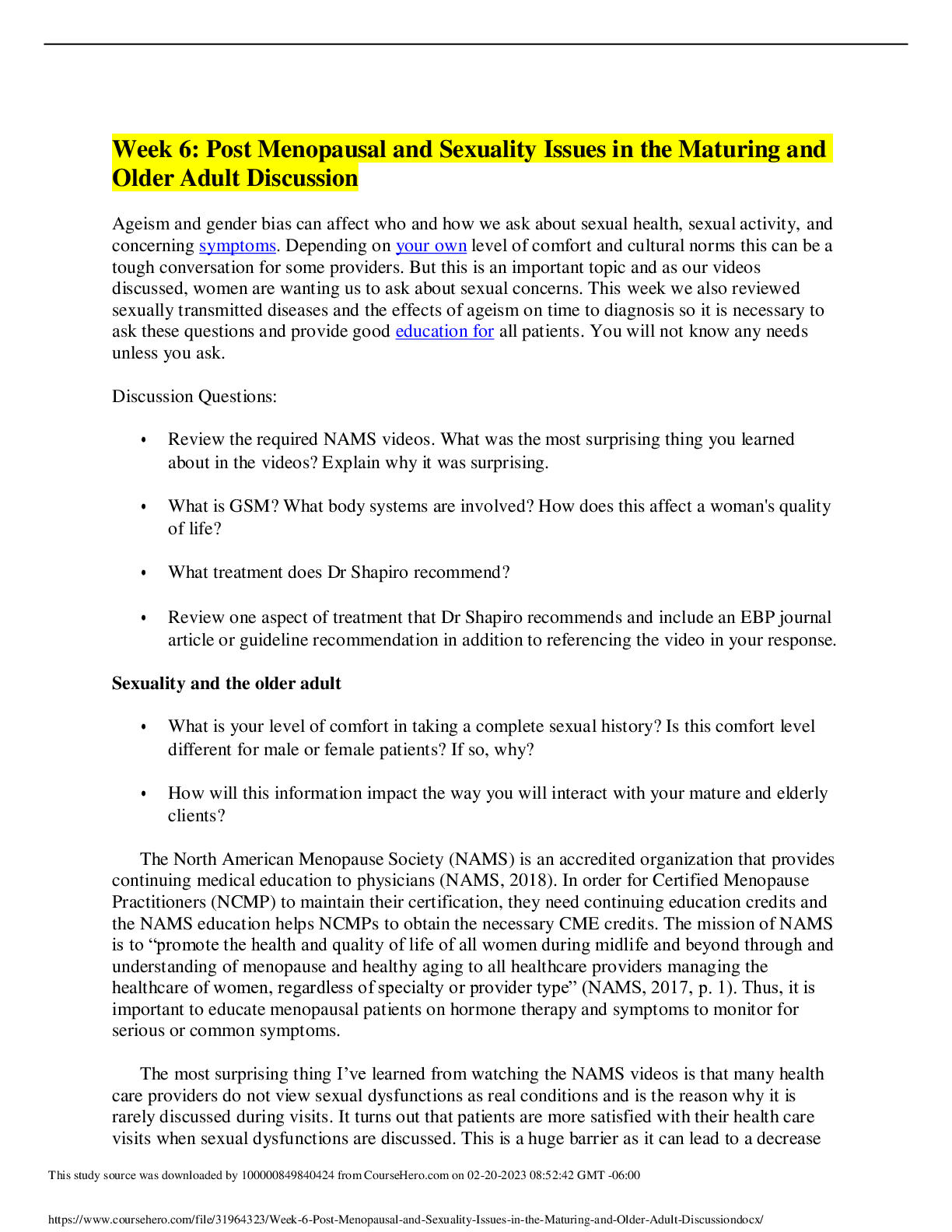

.png)
